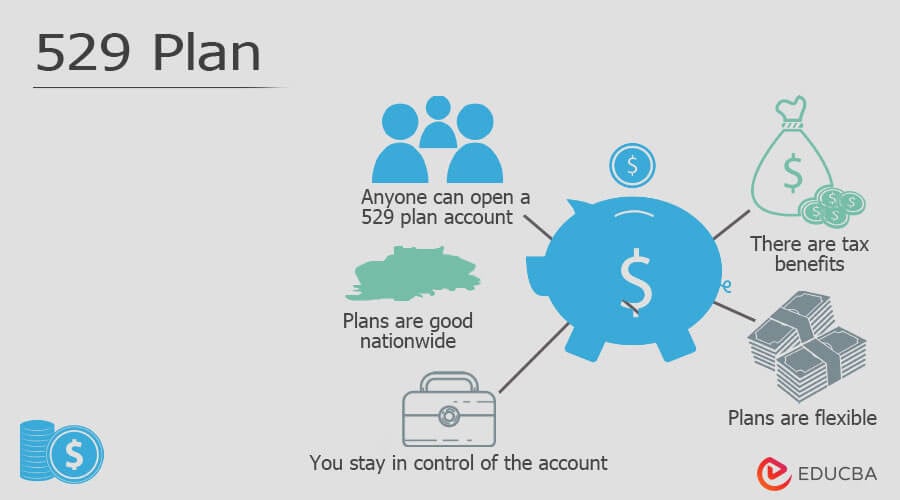Updated July 18, 2023
What is 529 Plan?
The term “529 plan” refers to the tax-advantaged savings plan created to support children’s future higher education expenses. In most cases, state or federal agencies or educational institutions sponsor these 529 plans. However, over time, their scope expanded to include K-12 education in 2017 and apprenticeship programs in 2019.
Explanation of 529 Plan
The name of the savings plan comes from Section 529 under the federal tax code. Although anyone can open a 529 account, parents typically start these accounts on behalf of their children, or grandparents initiate them on behalf of their grandchildren. The child or the grandchild is the ultimate beneficiary of the 529 plan. Some states offer tax deductions to the persons who fund these accounts.
How Does 529 Plan Work?
An investor opens a 529 account and starts contributing to it as per available plans in the state. The management team then comes into play as they start investing the funds in some safe securities so that it grows gradually. The management team is responsible for selecting investment schemes under the 529 plan.
Types of 529 Plan
There are two types, they are:
- Prepaid Tuition Plan
- Education Savings Plan
Prepaid Tuition Plan
In this type of savings plan, the investor can purchase units or credits in prospective colleges and universities to cover future tuition and other associated expenses at the current prices. However, it doesn’t cover costs pertaining to room and boarding in colleges and universities. Also, these plans are not for prepaying tuition fees for elementary and secondary education. In most states, the prepaid tuition plans are government-sponsored.
Education Savings Plan
In this type of savings plan, the investors can open an account to start saving to cover future expenses pertaining to the beneficiary’s higher education. Unlike prepaid tuition, this plan also covers room and boarding expenses. In some cases, the beneficiary can withdraw money from this savings plan to cover educational expenses in non-U.S. colleges and universities. The state governments sponsor all such savings plans.
529 Plan Contribution Limits
The 529 plans don’t have any limit for an annual contribution. The maximum aggregate limit ranges from $235,000in Georgia to $529,000 in California. As per federal law, the balance of the 529 accounts can’t exceed the beneficiary’s expected cost of education.
Rules
The rules binding the implementation of the plans are as follows:
- The growth of the money in a 529 account is tax-free until the withdrawal starts.
- The drawn money can be used to cover rental expenses for students who don’t live on the college campus. Please note that expenses borne prior to joining a college or university (such as application fees) are not covered under 529 plans.
- In the case of expenses for K-12 education, the annual limit for tax-free withdrawals is fixed at $10,000.
Uses of 529 Plan
The primary uses of 529 pan include the following:
- To cover the beneficiary’s qualified primary education expenses, including a tuition fee limit of $10,000 annually. It further covers the beneficiary’s expenses for qualified higher education, which includes secondary and higher secondary education.
- The amount in a 529 account can be used for full payment of training fees after secondary education and some portion of the private tuition expenses.
Advantages
Some of the major advantages are as follows:
- It provides financial assistance to the beneficiary to cover expenses for qualified education courses.
- It relaxes the pressure on the parents for child education in the future.
- It offers tax-saving options under various sections during tax filing.
- The capital appreciation in a 529 plan is tax-free until the point of withdrawal.
Disadvantages
Some of the major disadvantages are as follows:
- The benefits are limited to qualified education expenses only.
- The investors must incur high penalties if they need to withdraw their money for purposes other than qualified education expenses.
- The investments generate a meager return on investment.
- There is a limited number of investment schemes under the 529 plan.
Recommended Articles
This is a guide to 529 Plan. Here we discuss the introduction and how does 529 plan work. along with advantages and disadvantages. You may also have a look at the following articles to learn more –



